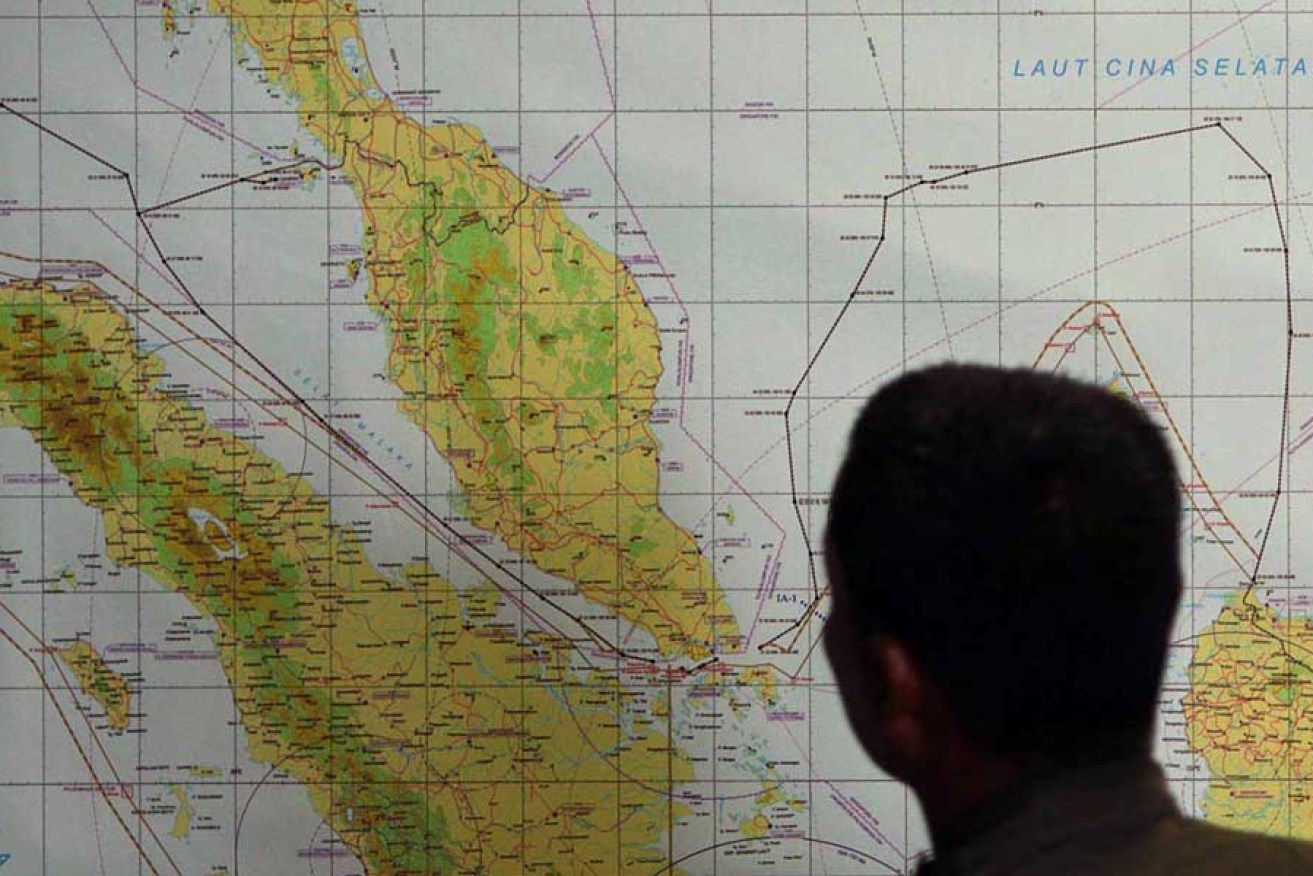UPDATED: China says its satellites have detected three large floating objects in a suspected crash site near where a missing Malaysian jet lost contact, the latest twist in a hunt which has entered its sixth day.
China’s state science and technology administration said late on Wednesday that a Chinese satellite had seen the objects in a “suspected crash sea area” in the South China Sea on March 9, and that the images were being analysed.
This afternoon, Malaysia said it has dispatched an aircraft to investigate the site.
“Bombardier has already been dispatched to investigate alleged claims of debris being found by Chinese satellite imagery,” Transport Minister Hishammuddin Hussein said on Thursday on his Twitter feed, on the sixth day of the search for Malaysia Airlines flight 370 and the 239 people on board.
The hunt originally focused on an area off Vietnam’s South China Sea coast, where the Boeing 777 last made contact Saturday on a journey from Kuala Lumpur to Beijing.
But Malaysian authorities later expanded it to the Andaman Sea, north of Indonesia, hundreds of miles away.
The suspected objects detected by the Chinese satellite were found at 105.63 degrees longitude East and 6.7 degrees latitude North, the administration said on its website.
It added that they were spread across an area with a radius of 20 kilometres, in sizes that appeared to be 13 x 18 metres, 14 x 19 metres and 24 x 22 metres. Previous sighting of possible debris have proved not to be from the jet.
It was not clear whether or when the images had been shared with Malaysian officials coordinating the ever-shifting search effort. Officials could not immediately be reached for comment on Thursday morning.
US authorities said on Wednesday that their spy satellites had detected no sign of a mid-air explosion when the Malaysian airliner lost contact with air traffic controllers.
On Wednesday Malaysia denied that the hunt for the aircraft was mired in confusion after a series of false alarms, rumours and contradictory statements.
Malaysian air force chief General Rodzali Daud attempted to explain why the search zone had been expanded, telling a press conference that military radar detected an unidentified object early Saturday north of the Malacca Strait off Malaysia’s west coast.
He said that the reading, taken less than an hour after the plane lost contact over the South China Sea, was still being investigated and they were not able to confirm it was MH370.
The confusion has fuelled perceptions that Malaysian authorities are unable to handle a crisis on this scale, and infuriated relatives.
Analysts said there were burning questions over what information – if any – Malaysia has gleaned from both military and civilian radar, and the plane’s transponders, and over discounted reports it was later detected near Indonesia.
“There are so many information sources that do not appear to have been used effectively in this case. As a result, the families of the missing passengers and crew are being kept in the dark,” said David Learmount, operations and safety editor at industry magazine Flightglobal.
One new detail did emerge: the words of MH370’s final radio transmission.
Malaysia’s ambassador to China, Iskandar Sarudin, said one of the pilots said “alright, good night” as the flight switched from Malaysian to Vietnamese airspace, according to Singapore’s Straits Times newspaper.
Azharuddin Abdul Rahman, Malaysia’s civil aviation chief, later confirmed that those were the last words from the cockpit.
Months before the Malaysia Airlines jet vanished, US regulators had warned of a “cracking and corrosion” problem on Boeing 777s that could lead to a mid-air breakup and drastic drop in cabin pressure.
“We are issuing this AD (Airworthiness Directive) to detect and correct cracking and corrosion in the fuselage skin, which could lead to rapid decompression and loss of structural integrity of the airplane,” the Federal Aviation Administration said.
It had circulated a draft of the warning in September, issuing a final directive on March 5, three days before MH370 disappeared.





